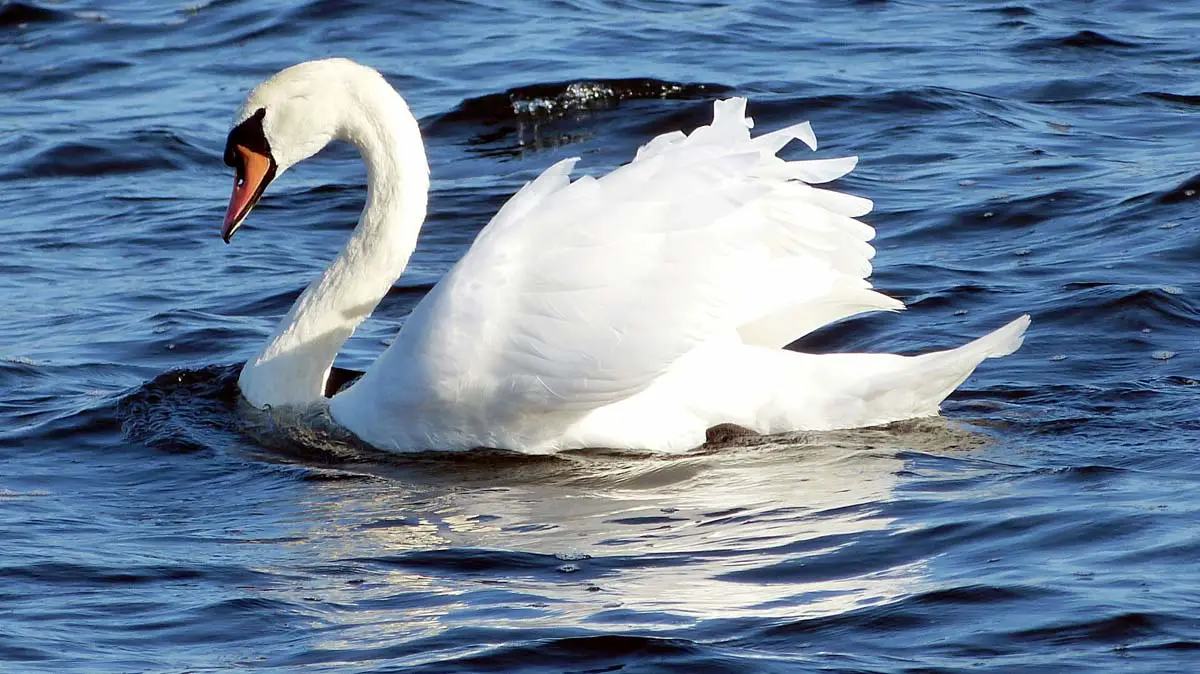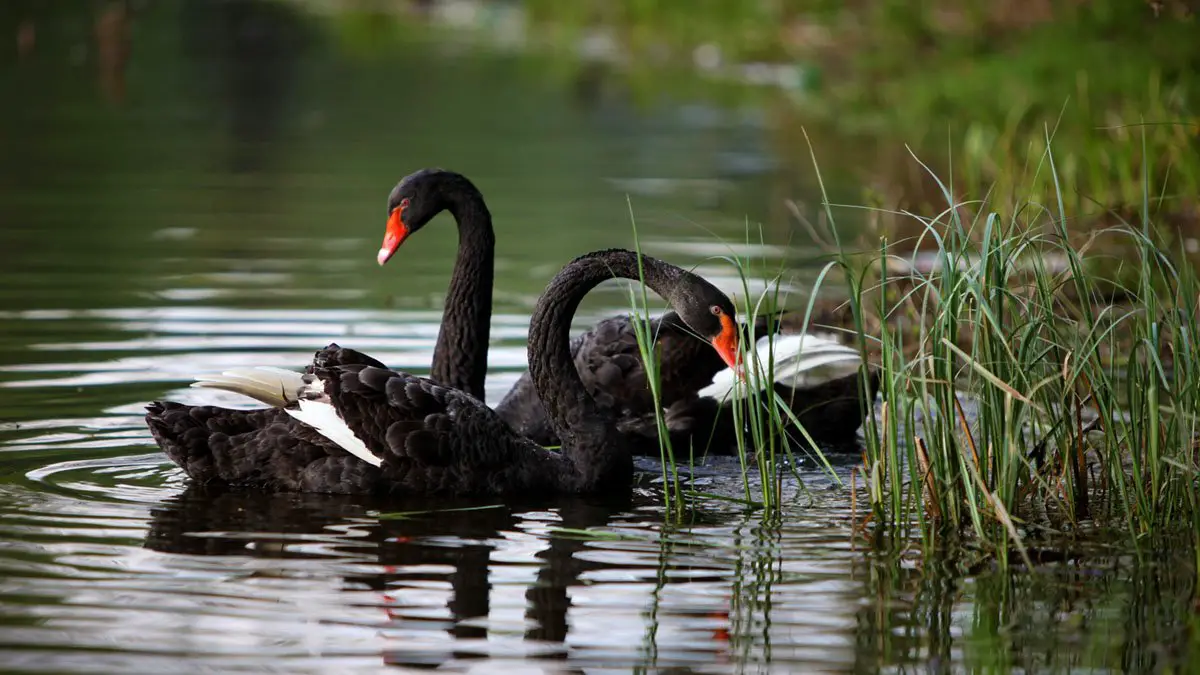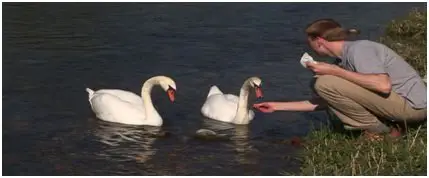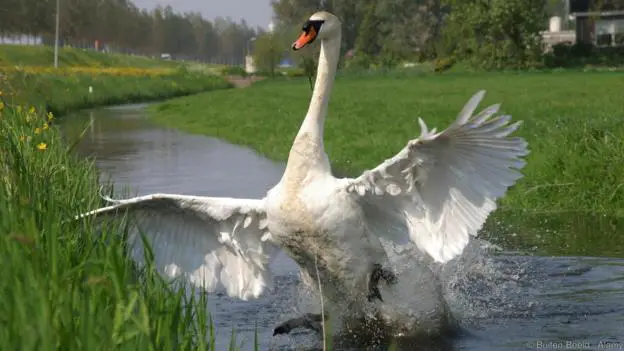Swans, the epitome of beauty, refinement and elegance among the feathered species, have been elevated to almost a mythical status in human consciousness. Their renowned “swan song” is legendary amidst romantics, as is their nearly exclusively monogamous mating strategy. They’ve been part of human culture for centuries, being part of the Greek Mythology and Irish legends, referenced in fables such as the tale of “The Ugly Duckling”, and mentioned in Vedic literature, where people with great spirits and spiritual capabilities are called “Supreme Swans”.
Swans are even referenced in the arts. Of particular significance is the wildly popular ballet, “Swan Lake”, by Pyotr Ilyich Tchaikovsky. More recently, the 2010 film “Black Swan” starring Natalie Portman, received critical acclaim and ended up being a big success.
But does their unblemished, unsullied reputation hold up to scrutiny? Are they one species? What exactly do they look like? Where do they live? Most importantly, what exactly do they eat and is it right to feed them ourselves?
What are they?

Birds of the genus Cygnus, Swans are close birdie relatives with the geese and ducks. There exist six to seven distinct species of swan, namely:
- the Mute Swan (Europe, southern Russia & China)
- the Black Swan (Australia & New Zealand),
- the Black-necked Swan (South America)
- the Whooper Swan (migrating from subarctic Europe and Asia to temperate Europe and Asia in winter)
- the Trumpeter Swan (North America)
- and the Tundra Swan (Breeds on North America and winters in the USA).
Of mention is also the Coscoroba Swan (South America), the smallest of the birds called “swans”, which is no longer considered one of the true swans.
How do they look?

Swans are amongst the largest flying birds, the biggest of them reaching a length of over 1.5 meters, weighing over 15 kilograms with wingspans over 3.1 meters. Males are generally bigger and heavier than females, and both sexes are alike in plumage. As a general rule, Northern hemisphere swans have white plumage, whereas Southern hemisphere ones are mixed black and white – with the Australian Black Swan being completely black. Notably, adult swans have patches of skin with no feathers between their eyes and bill. They are often compared to ducks or geese, but they are considerably larger, with proportionally larger feet and longer necks. They hatch up to ten eggs at a time, mating from spring through summer.
Where do they live?

Inhabiting climates ranging from polar to temperate, swans tend to settle in wetlands, streams, ponds and rivers – areas with high proximity to water that are able to support their nesting habits and preferred diet. Although they are not aquatic animals in the strict sense of the word, they often pass time in the water’s surface.
What do they eat?
Feeding on both water and on land, they are mostly herbivorous, even though they are not above eating small amounts of aquatic animals or small insects. Their natural diet consists mainly of aquatic vegetation, such as underwater plants and algae or grasses found along the banks of bodies of water.
In general, even though swans are a delight to us, we should stay away from feeding them. It increases their dependence on us for survival – and more often than not, the food we frequently feed them is unsuitable for them, causing multiple health problems down the line.
What not to feed them
When feeding water fowl, one should aim to stay as close to their natural diet as possible. Thus, we should NOT feed them:
- Anything unhealthy for us: Sugary, fatty, junk food.
- Milk and other dairy products, as birds are lactose intolerant.
- White bread, chips, cookies and cereal as they may result in digestive problems.
- Any food that is cooked or processed.
What to feed them

Instead, feeding them in small, manageable portions of the following is okay:
- Products as close to their natural diet as possible.
- Greens, including spinach, celery and shredded carrots.
- Gently steamed cabbage, beans, potatoes and broccoli.
Also, note that food should be thrown onto the water, so that they also swallow water together with it to aid their digestion. Moreover, feeding swans on land encourages them to leave water whenever they see people, a dangerous habit to develop as it puts them at significant risk when predators are about. Watch and enjoy the magnificent birds from afar, and refrain from drawing their attention to you as much as possible.
Co-existing with swans

Today, there exist places where swans nest and live completely open to human visitors. In fact, Black Swans are often known to gather on the east basin of the artificial, man-made lake, “Lake Burley Griffin”, in Australia. In London, there exist more than a hundred breeding pairs of mute swans, along with the odd black or whooper swan. Those swans are protected under the Wildlife and Countryside Act 1981, and killing or even injuring one of them incurs substantial monetary fines or months in jail. Stealing a swan egg is considered an equal offence and carries the same penalties.
For all you swan lovers, it is important to realize than even though you obviously hold the magnificent birds in deep adoration, there are people out there who would potentially harm them. Watch them from a distance, as they are not trusting pets nor should they ever become that. And if you decide to feed them, first educate yourself on what is and what is not toxic for them. Otherwise you might get into a lot of trouble.
Swan fun fact

There is a rather strange rumor circling these wonderful birds: That, in states of sudden aggression resulting from perceiving a threat, they can viciously attack and even break a human arm with their wings. Truly, swans do respond with extreme prejudice should their family be threatened. Male swans in particular are known to ferociously guard their nests. Their aggression, though, is mostly bluffing. According to Włodarczyk, it is very unlikely for a swan to ever be able to break an adult’s bones. This is a result of their honeycomb-like bone design, which makes them as light as possible and enables flight. A swan would be far more likely to break their own wing if they struck an adult human. Still, it would be quite unwise to try and experiment with their strength, and we definitely would not recommend that.
